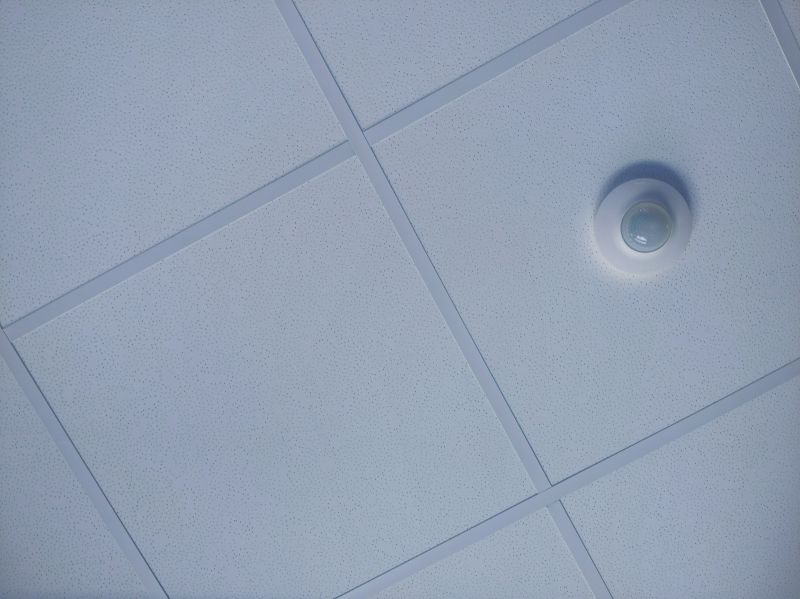Popular Drop Ceilingses Products for Modern Interior Designs
Discover the most sought-after ceiling solutions that combine durability with sleek appearance for a contemporary look.
 Drop ceiling systems are a versatile and practical solution for interior spaces, offering easy access to plumbing, wiring, and HVAC components while providing a clean and finished look. These ceiling systems typically consist of a grid framework that suspends tiles or panels beneath the main ceiling structure. They are commonly used in commercial offices, retail spaces, basements, and even residential areas where ceiling access or aesthetic flexibility is desired. The variety of materials and styles available allows for customization to suit different functional and decorative needs.
Drop ceiling systems are a versatile and practical solution for interior spaces, offering easy access to plumbing, wiring, and HVAC components while providing a clean and finished look. These ceiling systems typically consist of a grid framework that suspends tiles or panels beneath the main ceiling structure. They are commonly used in commercial offices, retail spaces, basements, and even residential areas where ceiling access or aesthetic flexibility is desired. The variety of materials and styles available allows for customization to suit different functional and decorative needs.
Top Overall Option
Suspension Grid and Tile System
A suspension grid and tile system provides a comprehensive solution for drop ceilings, offering compatibility with a wide range of tile types, easy installation, and straightforward maintenance. This versatile setup allows for customization in size, material, and acoustic properties, making it suitable for various environments. The modular nature of the grid facilitates quick adjustments or replacements, ensuring long-term usability and flexibility.
Types of Products For Drop Ceilingses
Mineral Fiber Ceiling Tiles
These tiles are known for their sound absorption qualities and fire resistance, making them popular in commercial spaces.
PVC Drop Ceiling Panels
PVC panels are lightweight, moisture-resistant, and easy to clean, suitable for basements and humid environments.
Metal Ceiling Tiles
Metal tiles offer durability and a modern aesthetic, often used in industrial or contemporary designs.
Acoustic Ceiling Tiles
Designed to improve sound quality within a space, these tiles are ideal for offices, conference rooms, and studios.
Stretch Ceiling Panels
Flexible fabric or vinyl panels that can be stretched to create smooth, seamless ceilings with customizable finishes.
Fiberboard Ceiling Tiles
Economical and easy to install, these tiles are suitable for general-purpose applications.
Lighting-Integrated Tiles
Ceiling tiles that incorporate lighting fixtures for a streamlined appearance and functional illumination.
Moisture-Resistant Panels
Ideal for damp environments, these panels resist mold and mildew while maintaining structural integrity.
Decorative Acoustic Panels
Combining aesthetics with acoustic performance, these panels add visual interest while reducing noise.
Perforated Ceiling Tiles
Designed with perforations to enhance sound absorption and ventilation in various settings.
Recessed Lighting Panels
Panels designed to accommodate recessed lighting fixtures for a clean, integrated look.
Suspended Metal Grids
The foundational framework supporting various tile types, offering stability and ease of installation.
Aluminum Ceiling Tiles
Lightweight and corrosion-resistant, suitable for commercial and industrial environments.
Textured Ceiling Panels
Panels with decorative textures to add visual depth and style to drop ceiling designs.
Eco-Friendly Ceiling Tiles
Made from sustainable materials, offering environmentally conscious options for drop ceilings.
Fire-Resistant Panels
Designed to meet fire safety standards, these panels provide added protection in commercial spaces.
Popular Choices
Widely used for noise control in offices and public spaces, offering varied styles and sound absorption properties.
Common in basements and humid areas due to their moisture resistance and ease of maintenance.
A frequent choice for commercial settings seeking sound absorption and fire safety features.
Chosen for durability and modern aesthetics in various commercial and industrial applications.
Popular for adding visual appeal while managing acoustics in creative or professional environments.
Ideal for spaces prone to humidity, such as basements or kitchens, with a focus on durability.
Growing in popularity for their seamless appearance and customizable finishes in modern interiors.
Favored for their ability to combine lighting with ceiling design in commercial and residential spaces.
Selected for creating clean, integrated lighting solutions within drop ceiling systems.
Chosen for their acoustic benefits and ventilation capabilities in various environments.
Used to add decorative depth and style to ceiling surfaces in creative interior designs.
Recognized for their lightweight and corrosion-resistant qualities in high-traffic areas.
When selecting products for drop ceilings, considerations include the type of tiles or panels, the grid system compatibility, ease of installation, and acoustic properties. Acoustic tiles can help reduce noise levels, making them suitable for offices or entertainment spaces. Light-diffusing panels can enhance lighting efficiency, while moisture-resistant options are ideal for basements or humid environments. Additionally, the weight and durability of the tiles influence their suitability for specific applications. Proper installation ensures the ceiling system remains stable over time and maintains its appearance.
Maintenance and accessibility are also important factors. Drop ceiling tiles are generally easy to replace if damaged or stained, which can be beneficial in high-traffic or commercial settings. Some systems incorporate integrated lighting or ventilation features, adding functionality without compromising the overall aesthetic. When choosing products, it is essential to consider compatibility with existing ceiling infrastructure and the ease of future modifications or upgrades. Overall, drop ceiling products offer a flexible, cost-effective solution for creating functional and visually appealing ceiling spaces.
Key Buying Considerations
- Compatibility with existing grid systems to ensure proper fit and ease of installation.
- Material properties such as fire resistance, moisture resistance, and acoustic performance.
- Aesthetic style and color options to match the overall interior design.
- Ease of maintenance and replacement, especially in high-traffic or commercial environments.
- Weight of tiles or panels to ensure structural support and safety.
- Acoustic properties for noise reduction and sound control needs.
- Lighting integration options for functional and aesthetic purposes.
- Installation complexity and whether professional help is required.
- Environmental conditions of the space, such as humidity or temperature fluctuations.
- Cost considerations, including initial investment and long-term durability.
- Availability of accessories like trim, suspension wires, and mounting hardware.
- Compliance with safety standards and building codes relevant to the space.
- Environmental impact and sustainability of materials, if relevant.
- Potential for future modifications or upgrades to the ceiling system.
- Warranty and support options offered by suppliers or manufacturers.
